VERY RARE! Original 1903 New York City - Newtown Queens Early 1900's NYC Blueprint Map (PLATE 05)*
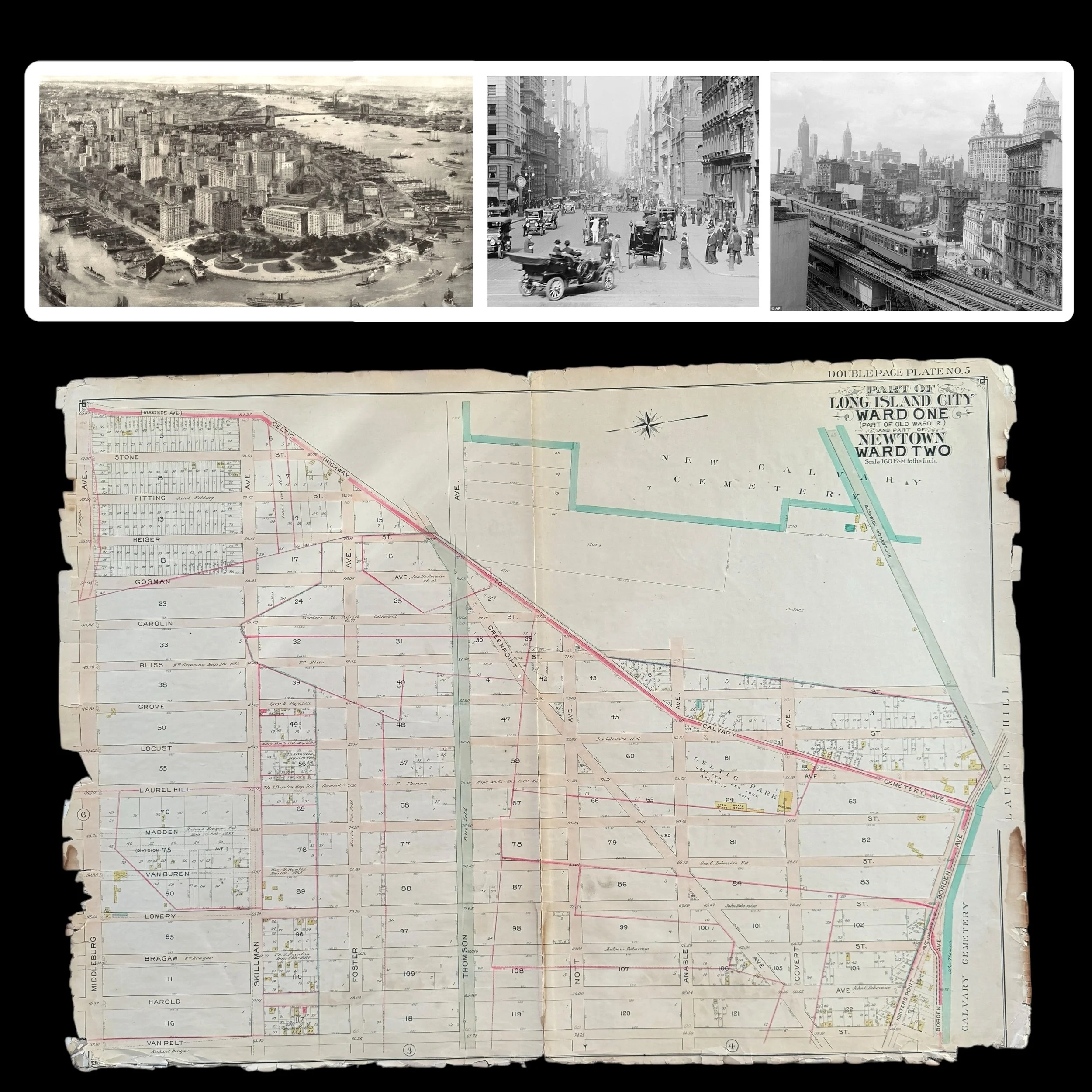
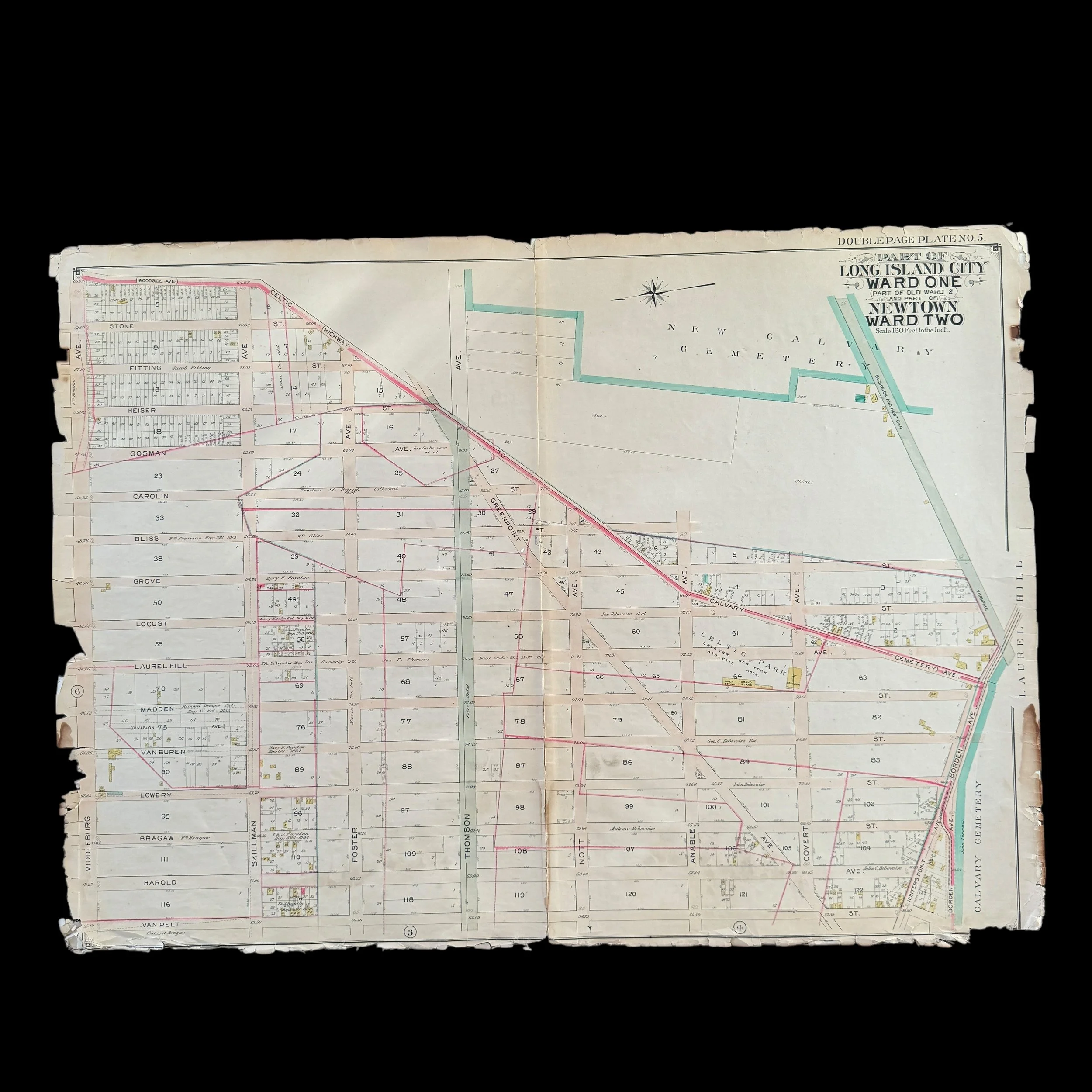
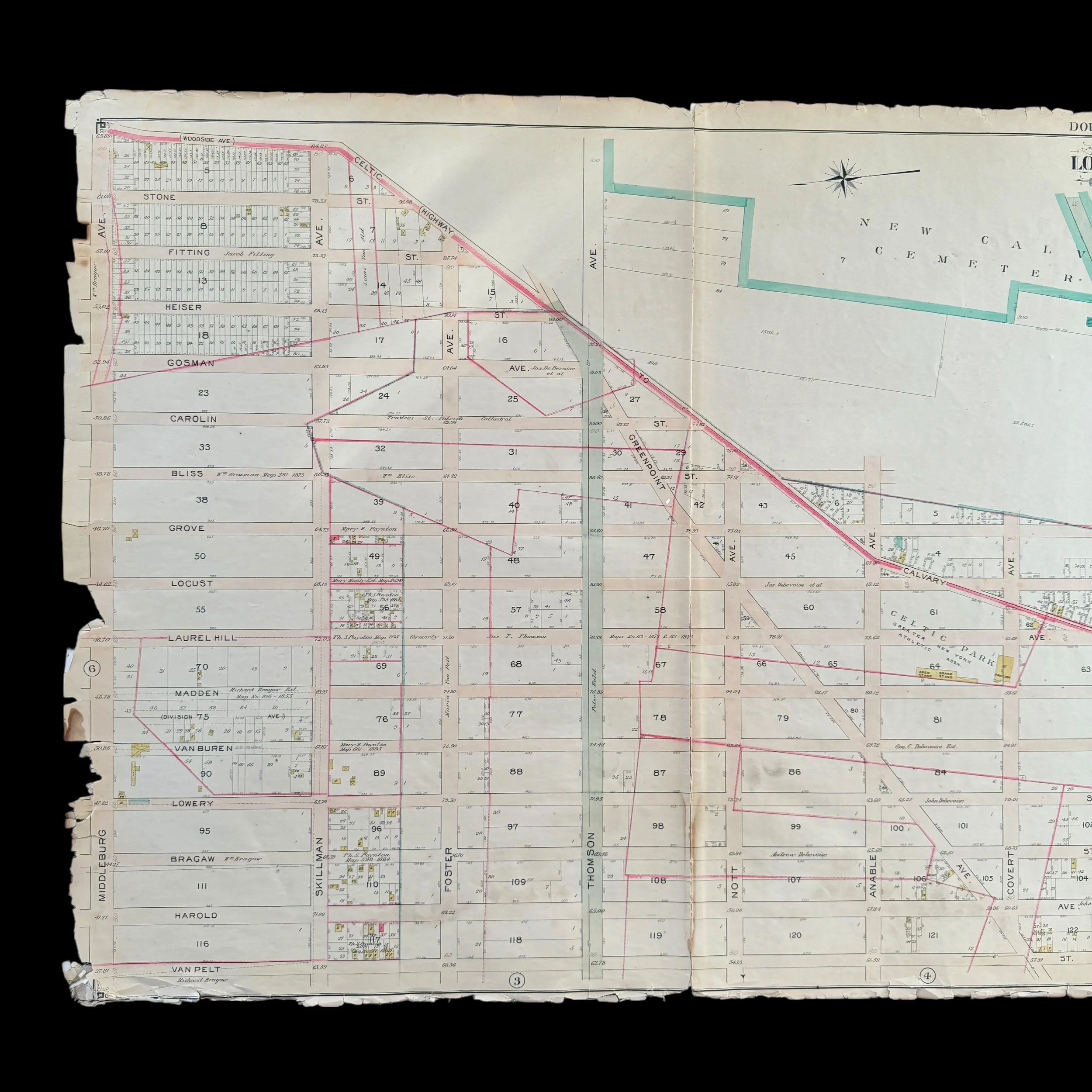

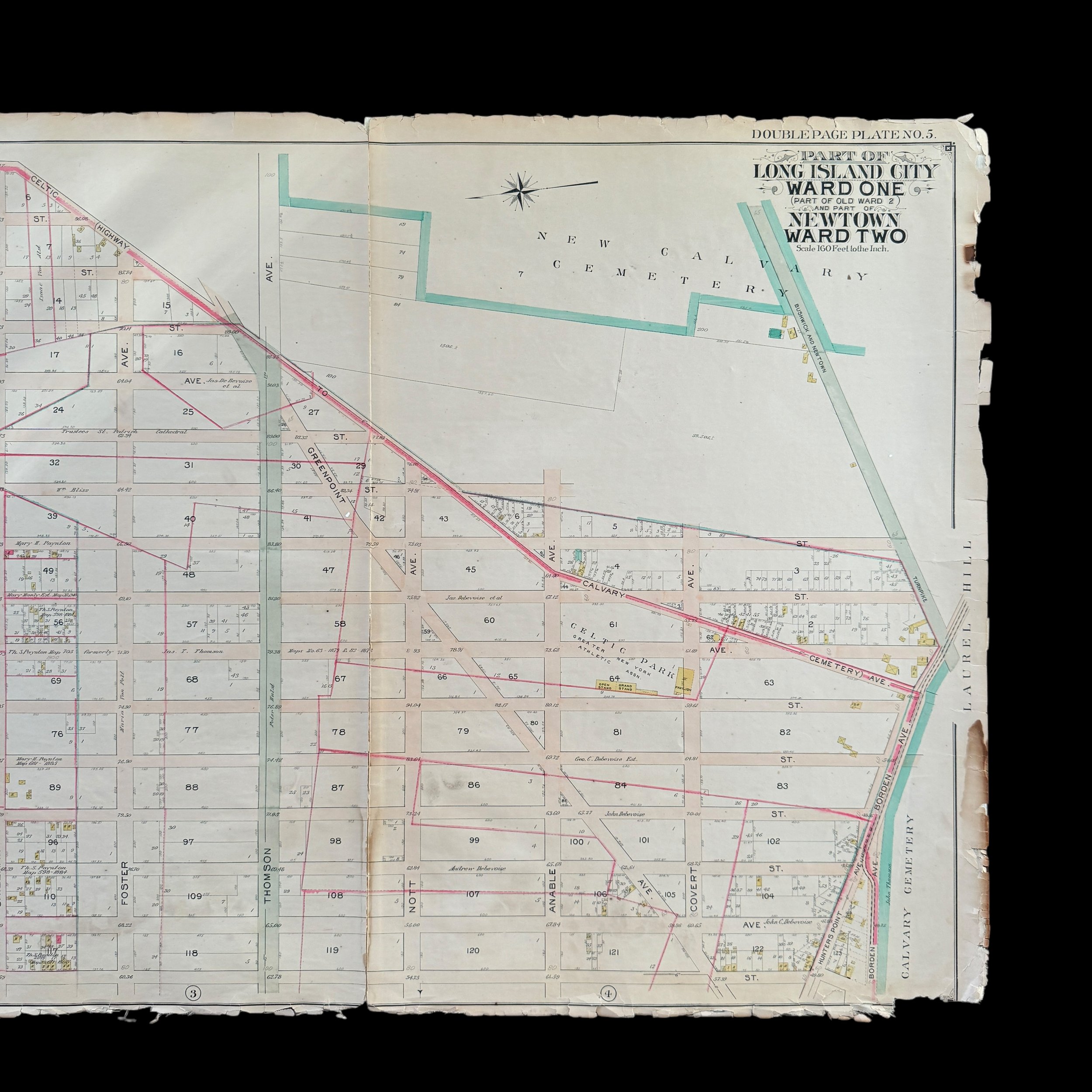
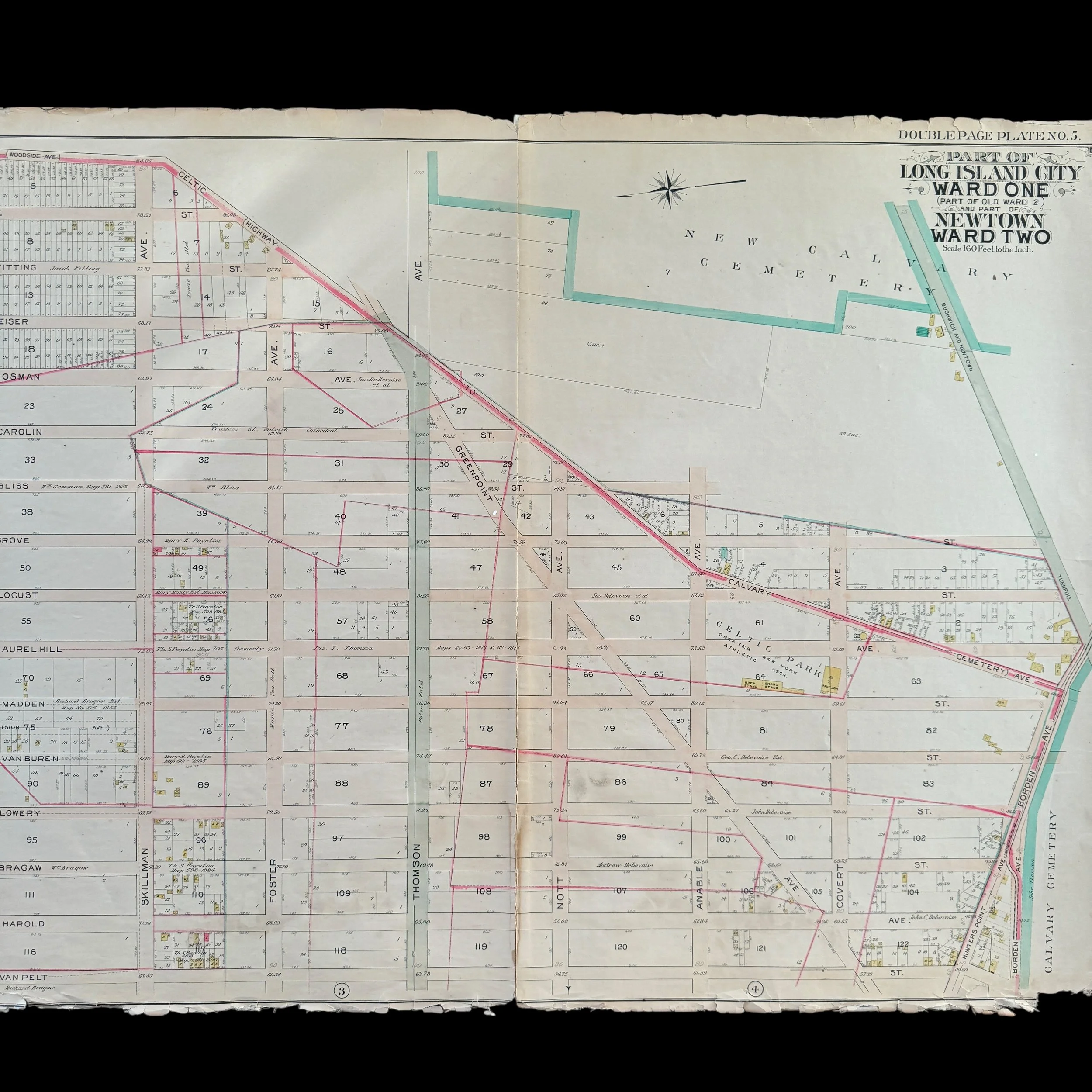




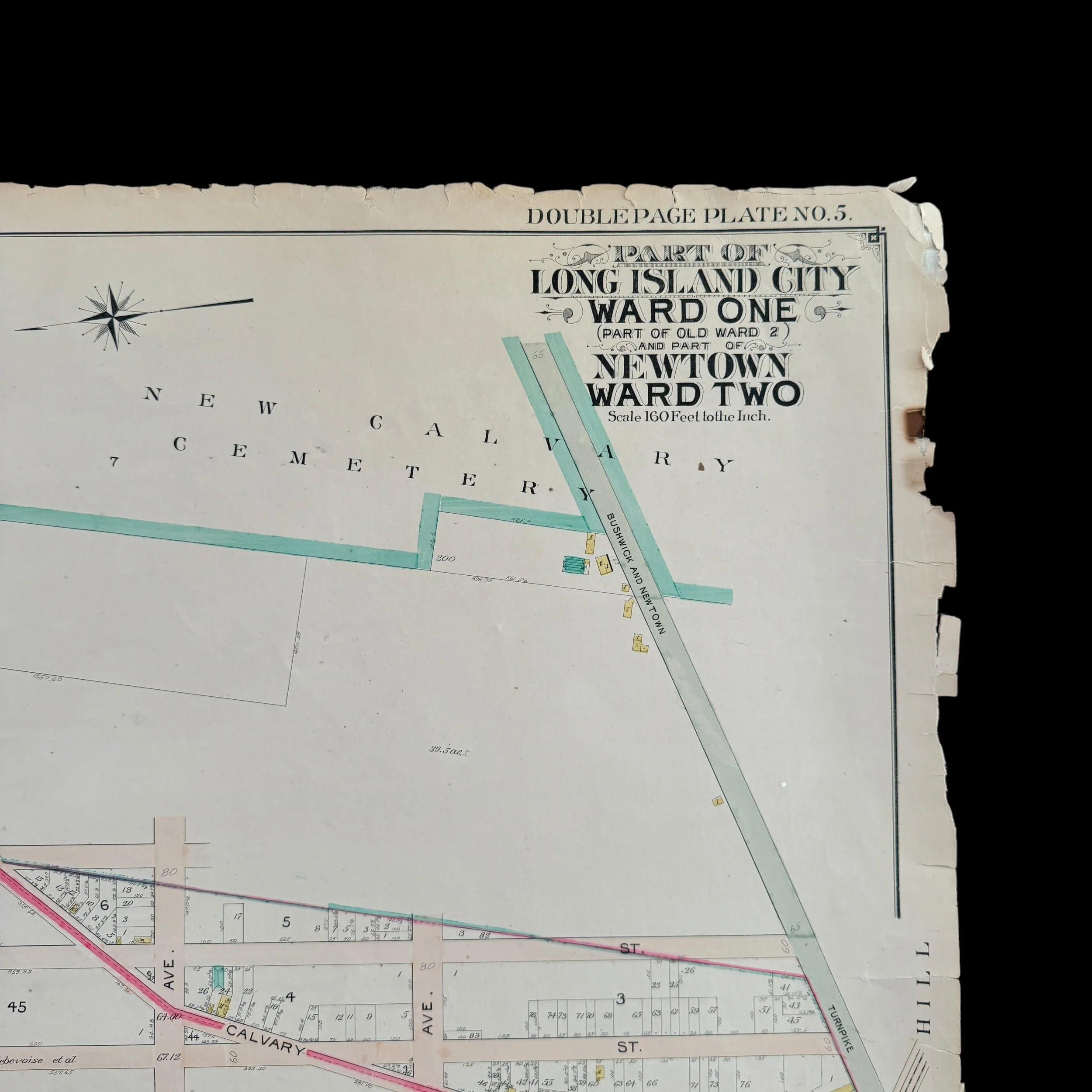

VERY RARE! Original 1903 New York City - Newtown Queens Early 1900's NYC Blueprint Map (PLATE 05)*
Comes with a hand-signed C.O.A.
*This is an extremely rare piece of original early 1900s New York City history that would make a stunning centerpiece in any collection. Framed and displayed, this original 1903 NYC blueprint would not only serve as a captivating conversation piece but also as a tangible link to the city’s past. Its detailed craftsmanship and historical significance make it perfect for anyone passionate about New York City's rich architectural and urban development history. Whether featured in a private collection, office, or historical space, this rare blueprint is sure to become a treasured heirloom that celebrates the evolution of one of the world's greatest cities.
Size: 27 × 37 inches
Dated: 1903
Place: New York - Brooklyn - Queens
Publisher: E. Belcher Hyde
This extremely rare, museum-grade artifact from early 1900s New York City is an original 1903 blueprint map that is a heavily used and marked blueprint was created by the renowned cartographer and publisher E. Belcher Hyde, whose detailed real estate and property maps of New York City and Long Island in the late 19th and early 20th centuries are revered for their precision and historical significance.
At more than 100 years old, this original NYC blueprint is part of a larger series that meticulously documented various sections of New York City, including Queens, Brooklyn, and other boroughs. These maps captured the rapid urban development during a time of major transformation for the city.
In 1903, NYC was at the heart of significant change, having been incorporated into Greater New York City just five years earlier in 1898. The area was transitioning from a largely industrial and residential neighborhood into a more integrated part of the bustling metropolis. Detailed blueprints like this one were vital to guiding that development, serving as indispensable tools for real estate professionals, city planners, and developers.
E. Belcher Hyde's blueprint for NYC offered a wealth of information, from property boundaries and building footprints to street layouts, lot numbers, and ownership details. The blueprint also included railways, waterways, and industrial zones, making it an essential resource for planning new developments and infrastructure. These blueprints were not just practical but legal documents, often used to resolve disputes over property lines and land use.
Hyde’s attention to detail and accuracy in cartography ensured that his blueprints reflected the rapidly changing landscape of New York City at the turn of the century. Today, the 1903 blueprint is a valuable historical artifact, offering a detailed glimpse into the urban planning and development of Long Island City during this pivotal era.
Maps published by E. Belcher Hyde are now considered some of the most important historical documents of the time, providing an unparalleled snapshot of New York City’s growth, land use, and infrastructure at the height of their transformation into a global metropolis.
This is truly a once-in-a-lifetime opportunity to own a one-of-a-kind piece of New York City history. This original 1903 E. Belcher Hyde blueprint is the only known version available for purchase in the public sector. With the majority of these rare blueprints held in private museum collections, opportunities like this are exceedingly rare, making this a unique chance to own an authentic artifact of New York’s early 20th-century development.
Newtown, New York City: A Historical Overview with Emphasis on the 1900s
Newtown, New York City, is an area with a deep and multifaceted history that predates the establishment of the city itself. Originally a colonial settlement founded in the 17th century, Newtown evolved into a crucial part of what is now the borough of Queens. By the 1900s, Newtown was well on its way to becoming integrated into the rapidly expanding New York City. The early 20th century marked a transformative period, where the area saw a wave of industrialization, suburban development, and demographic changes that reshaped its identity.
Historical Background: Newtown’s Foundation
Newtown’s history stretches back to the mid-1600s when Dutch and English settlers began colonizing what is now known as Queens. Initially called "Middelburgh" by the Dutch, the settlement was renamed "Newtown" by English settlers in the 1650s, reflecting their intent to create a new community distinct from their European origins. The area developed into a small agricultural and residential community throughout the 17th and 18th centuries. During the 19th century, as New York City grew into a commercial and industrial hub, Newtown became a desirable suburban retreat for middle and upper-class families looking to escape the crowded and polluted conditions of Manhattan.
The Transformation of Newtown in the Early 1900s
By the turn of the 20th century, Newtown, along with much of Queens, was undergoing a significant transformation. The Greater New York City Consolidation Act of 1898 incorporated Newtown into the newly created borough of Queens, unifying it with New York City and Brooklyn. This incorporation laid the foundation for the development and modernization that characterized Newtown in the following decades.
The early 1900s marked a period of rapid urbanization for Newtown. The area’s proximity to Manhattan, coupled with the construction of new transportation routes, such as the Queensboro Bridge (opened in 1909) and the expansion of the Long Island Rail Road, made it more accessible to the city’s growing population. This accessibility spurred suburban development, turning Newtown from a rural, agricultural area into a suburban and urban neighborhood.
Industrialization and Economic Development
The early 20th century was a time of economic growth for Newtown. With its integration into New York City’s broader transportation network, Newtown attracted various industries. Factories and manufacturing plants emerged along the neighborhood’s transportation corridors, bringing new economic opportunities. Factories producing textiles, food products, and other goods became the backbone of the local economy. The area also saw an influx of small businesses, including shops, bakeries, and other commercial establishments catering to the growing population.
Industrialization brought prosperity, but it also led to demographic shifts. Immigrant populations from Europe, particularly Italian, Irish, and Eastern European Jewish communities, settled in Newtown, drawn by job opportunities and affordable housing. These immigrants played a vital role in shaping the neighborhood’s social fabric, establishing cultural institutions, religious centers, and ethnic businesses that defined the character of Newtown.
Suburban Development and the Housing Boom
As Newtown’s industrial base grew, so did its residential appeal. The early 1900s saw a suburban boom fueled by new housing developments and the construction of more transportation links. Middle-class families, many of whom worked in Manhattan’s growing commercial sectors, were drawn to Newtown’s relatively affordable housing options and its proximity to the city. Developers built rows of brick houses and apartment buildings, which offered modern amenities like indoor plumbing and central heating—luxuries that were becoming increasingly desirable in urban areas.
This suburbanization also led to the rise of the middle-class lifestyle that defined much of Newtown in the early to mid-20th century. Community life revolved around local businesses, churches, schools, and social clubs. The sense of community identity was strong, as residents formed neighborhood associations to maintain local parks, improve infrastructure, and advocate for public services.
The Impact of World Wars and the Great Depression
The economic and social landscape of Newtown, like the rest of the country, was deeply affected by the two World Wars and the Great Depression. During World War I, Newtown’s industries pivoted to support the war effort, with factories producing military supplies and goods. The population, driven by patriotism and a sense of duty, saw many young men enlist. After the war, returning soldiers and the national economic boom led to further development in the area.
However, the Great Depression of the 1930s brought significant challenges. Factories closed, and unemployment surged, affecting the working-class and immigrant communities that had formed the backbone of Newtown’s economic growth. The local government and community organizations worked together to provide relief and support for struggling families. Public works programs initiated by the New Deal led to the construction of new roads, parks, and other public infrastructure that improved the area’s quality of life and laid the groundwork for post-war prosperity.
Post-World War II Expansion and Suburbanization
Following World War II, Newtown experienced another wave of transformation, this time shaped by the suburbanization boom of the 1950s and 1960s. Returning veterans took advantage of the GI Bill, which provided low-interest loans for home purchases. This led to a housing construction boom that expanded Newtown’s residential areas significantly. The construction of the Long Island Expressway and other major highways further integrated the area with the larger metropolitan region, making it an even more attractive location for families seeking suburban life with city access.
Newtown’s demographic composition also began to change during this period. The post-war economic boom attracted not only European immigrants but also waves of Puerto Rican and, later, Asian immigrants, particularly from China and South Korea. These new communities brought diverse cultural influences that reshaped the neighborhood’s social landscape, adding to its complexity and richness.
Urban Challenges and Redevelopment in the Late 20th Century
By the late 20th century, Newtown faced many of the same urban challenges seen throughout New York City, including issues of overcrowding, housing shortages, and the decline of industrial employment. Factories that once fueled the local economy began to close, replaced by service industries and retail. The deindustrialization trend of the 1970s and 1980s led to economic decline in some parts of the neighborhood, as blue-collar jobs disappeared, and unemployment rose.
In response to these challenges, local government and community organizations launched redevelopment initiatives aimed at revitalizing the area. Public housing projects were established to accommodate the growing population, and historic preservation efforts sought to maintain Newtown’s architectural heritage. The community also organized to fight for better schools, more parks, and improved public services, striving to make Newtown a safe and thriving area for its increasingly diverse population.
Cultural Legacy and Modern Identity
The history of Newtown in the 1900s is one of transformation, growth, and adaptation. From its roots as a colonial agricultural settlement, it evolved into a bustling urban area, playing an integral role in the development of Queens and New York City as a whole. The neighborhood’s ability to adapt to the waves of economic change, from industrialization to post-war suburbanization and late-century urban renewal, speaks to its resilience and dynamic character.
Today, the legacy of Newtown’s 20th-century evolution remains visible in its architecture, its diverse population, and its community institutions. The neighborhood reflects the broader story of New York City itself: a place shaped by immigration, economic change, and the pursuit of the American Dream. As Newtown continues to evolve in the 21st century, it remains rooted in the historical foundations laid in the 1900s—a testament to the enduring power of community, diversity, and adaptation in one of the world’s greatest cities.